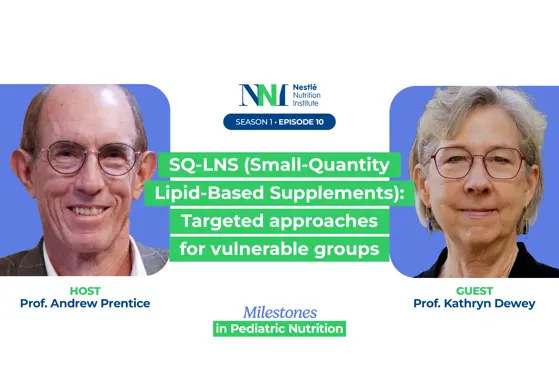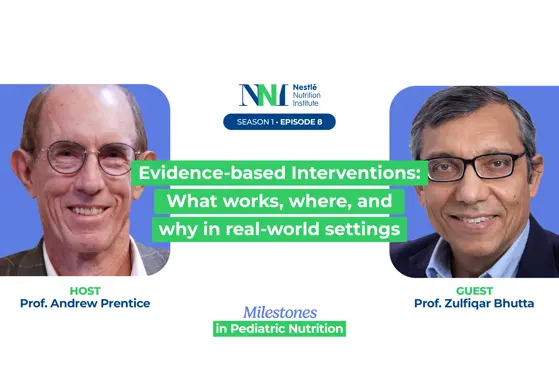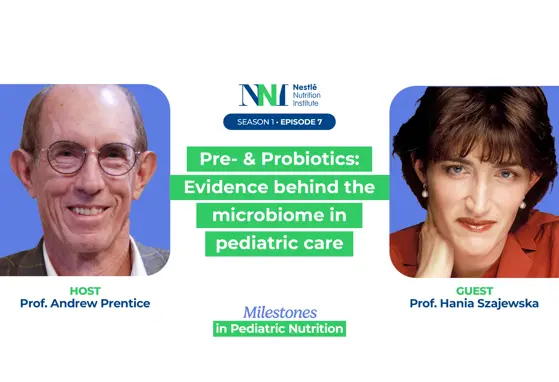Gene-related HMO composition impacts infant's language, says study
Researchers have found a link between HMO composition resulting from genetic polymorphisms, and language development in infancy. Human milk oligosaccharides (HMOs), the third most abundant solid component of human milk (HM), have been linked to a number of potential health benefits. In particular, both sialyllactose (SL) and 2’-fucosyllactose (2’-FL) have been implicated to benefit early cognitive development in preclinical studies.
However, variations of HMO composition can result from genetic polymorphisms. For example, Alpha-Tetrasaccharide (A-tetra), has been shown to only be present in the HM of women with blood type A.
The authors of the current study say this raises two major considerations regarding the levels of A-tetra in HM. First, the presence (A-tetra+) or absence (A-tetra-) is associated with blood type, suggesting potential genetic origins. Second, given a large portion of HM samples are expected to be A-tetra-, statistical approaches accounting for this major factor should be considered.
The current study aimed to examine the potential associations between HMO composition and cognitive development in children between birth and 3 years of age. Statistical approaches stratifying subjects based on the level of A-tetra were employed to determine whether associations of 8 HMOs and early cognitive development differ between the presence (A-tetra+) and absence of (A-tetra-) A-tetra.
The study
A total of 99 mother-child dyads (33 A-tetra+ and 66 A-tetra-) were enrolled in this longitudinal study. The numbers of participants with one, two, three, and four study visits were 49, 24, 18, and 8, respectively. At every visit, a HM sample was collected from the mother by breast pump. 183 HM samples were collected altogether.
The following HMOs were quantified using standard curves with authentic HMO standards: 2’-FL, 3-fucosyllactose (3-FL), 3’- sialyllactose (3’-SL), 6’-SL, lacto-N-tetraose (LNT), lacto-Nneotetraose (LNNT), lacto-N-fucopentaose I (LNFP-I), and Atetra.
The cognitive development of the infants was assessed at every visit using the Mullen Scales of Early Learning (MSEL). This is a widely used tool to assess infant cognitive development, comprised of 5 subdomains: fine motor, gross motor, visual reception, receptive language, and expressive language. An early learning composite (ELC) score corresponding to the Developmental Quotient score for infants can be derived using the scores of all subdomains. The MSEL was administered at every visit by trained staff who were not blinded to subjects’ milk exposures.
Results
Resulting data revealed levels of 3’-SL were significantly and positively associated with the ELC scores in Atetra+ subjects. The associations were specific to expressive (how the child uses language to express themselves) and receptive language (their ability to understand information) scores.
Furthermore, larger effects of 3’-SL on receptive language were observed for children older than 12 months as compared to those younger than 12 months.
These results support the potential cognitive benefits of HMOs in the A-tetra+ subgroups of infants. The researchers believe these are the first reported human results demonstrating positive associations between 3’-SL and cognitive development, particularly language development, during infancy.
The authors note a number of limitations of this study including the lack of diversity in the sample, the lack of knowledge over other socioeconomic factors which may have impacted results, and the lack of analysis of other HM components such as fatty acids, which can also influence cognitive development.
The report concludes: "When children were stratified based on A-tetra levels in the HM that they received, a significant positive association between 3’-SL and the ELC score was observed in A-tetra+ subjects. This association was driven by the receptive and expressive language subdomain scores. Our results support the potential cognitive benefits of HMOs in the A-tetra+ subgroups of infants."
Source: Seoyoon Cho, Ziliang Zhu, Tengfei Li, Kristine Baluyot, Brittany R Howell, Heather C Hazlett, Jed T Elison, Jonas Hauser, Norbert Sprenger, Di Wu, Weili Lin, Human milk 3’-Sialyllactose is positively associated with language development during infancy, The American Journal of Clinical Nutrition, Volume 114, Issue 2, August 2021, Pages 588–597, https://doi.org/10.1093/ajcn/nqab103
If you liked this post you may also like

Kathryn Dewey - SQ‑LNS (Small‑Quantity Lipid‑Based Supplements): Targeted approaches for vulnerable groups - Milestones in Pediatric Nutrition - Episode 10

Mark Manary & Adeline Lescanne - Ready‑to‑Use Therapeutic Foods: Treating severe acute malnutrition at scale - Milestones in Pediatric Nutrition - Episode 9

Zulfiqar Bhutta - Evidence‑based Interventions: What works, where, and why in real‑world settings - Milestones in Pediatric Nutrition - Episode 8

Hania Szajewska - Pre‑ & Probiotics: Evidence behind the microbiome in pediatric care - Milestones in Pediatric Nutrition - Episode 7